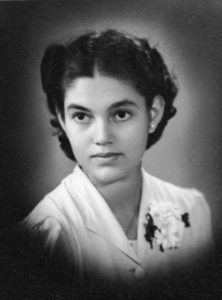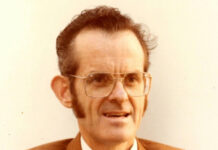A wonderfully evocative name, that conjures up images of a beautiful colonial home with wide cool verandahs set among palms gently swaying in the warm soft breeze on some long-forgotten island in the Pacific. A place where time is punctuated only by the thud of falling coconuts, and has somehow marched around, rather than through, the lives of those fortunate enough to have a found a quiet and idyllic corner of world to call home.
For those of us who grew up on a steady diet of Hollywood B movies made between the 1940s and 1960s, you might see Fred MacMurray and Madeleine Carroll fall in love in Honeymoon in Bali, or even Marlon Brando’s painful portrayal of Sakini in The Tea House of the August Moon, set during the Americanization and reconstruction of post-war Okinawa. There are others, but you get the idea.
As a child I watched these movies, usually hiding from the quietly baking heat of the endless afternoons during the endless summer holidays, and I dreamt that one day I might find my own quiet corner of the Pacific. The flickering images of a world that was already gone were, of course, nothing more than a Hollywood fantasy, sold for the small price of admission to an air-conditioned theatre, and ultimately consigned to endless reruns on black-and-white television. If I had looked around me, rather than at the television, and had been perceptive enough to understand what was there in plain sight, there were other and still living images of that lost world. For I remember my grandparents, and their friends, and the strange and quietly broken people they knew and to whom they were so attentive. Most families had them, and you could see sitting quietly and often alone at family functions, and in the RSL and bowling clubs, or through the open doors of the pubs. There were others as well, strange and erratic people away from whom we were quickly steered, who were no less broken, but seemed always to be angry. I never quite understood what had happened to these people, and as a child no one wanted to talk about it, at the least to me.
But eventually I grew up, and I was lucky enough to eventually talk to these people, and because I was interested, they told what had happened to them. These people fought the Japanese. I remember one wheelchair-bound man, who worked with my mother, and he was all of these things; I was later to find out that as a prisoner in Changi he was partially gutted by a Japanese guard using a sword.
The House of the Seven Seas is as far from the Hollywood fantasy as is humanly possible, even in a world gone mad in war. For the House of the Seven Seas was a place soaked in the violence of sexual subjugation and abject degradation, the epitome of the cruelty of the Japanese Imperial Army as it swept through South East Asia. The House of the Seven Seas was a military brothel filled with Comfort Women, dragged into sexual slavery at the point of a bayonet.
When the media occasionally speaks about Comfort Women, most people, if they happen to know anything at all of this dark corner of the war in the Pacific, think of the mainly Korean women who bore the brunt of these shameful events, and the occasional debates about post-war Japan’s failure to acknowledge the crimes against them, or compensate them, if that were even possible. And yet, living among us here in Australia are women who were also forced into sexual slavery by the Japanese Imperial Army.

You can read about one, Jan O’Herne, at the Australian War Memorial. Jan was living in the then Dutch East Indies when the Japanese arrived, and she was interned along with her mother and two sisters. In 1944, all of the girls in the camp aged 17 and above were lined up, and the ten most attractive selected. Jan and the others were then taken to the House of the Seven Seas, where they became sexual slaves for the use of the Japanese Imperial Army. The women, some of whom were virgins, were repeatedly raped and beaten, and forcibly miscarried if they fell pregnant. Those that survived remained at the House of the Seven Seas for four months; Jan was moved to another interment camp from which she was liberated in August 1945.
After the war ended, Jan married a British soldier and they came to live in Australia in 1960.
You are probably asking yourself why I am recalling such appalling events now. The answer is simple; there is a Memorial to the Comfort Women in the form of a statue currently displayed at the Ashfield Uniting Church in Sydney. Yesterday it was reported that the Australia-Japan Community Network is lodging a complaint with the Australian Human Rights Commission under Section 18C of the Racial Discrimination Act, on the basis that the statue has ‘offended, insulted and humiliated’ Japanese Australians.
I won’t bother repeating the myriad arguments about whether, and rational reasons that, Section 18C is a bad law that promotes the very division the social engineers who imposed it upon us thought they were outlawing. Suffice to say, any law that even arguably can be applied to outlaw a memorial to the appalling suffering of the women forced in sexual slavery by the Japanese Imperial Army has no place on the statute books in a country like Australia. Indeed, it is possible to make a cogent case that 18C is an evil law. The failure of successive governments to repeal it is disgraceful, even in the face of mounting evidence of its chilling effect on the lives of people dragged into the star chamber that Australian Human Rights Commission has become, and the broader degradation of the rights of ordinary Australian to speak freely. That two Liberal Governments have run away from something so corrosive to a liberal democracy should be a matter that shames each and every member of those governments.










